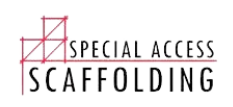Some Faqs
- Home
- Some Faqs
Frequently asked Questions
Do I need a scaffolding permit?
A scaffolding permit is required where the scaffolding unit will be erected on or over a public highway. This includes pavements and footpaths. Certain dispensation may have to be made, such as agreeing work during quiet times, in order for the permit to be granted. Your scaffolding company should deal with the application process for this permit, but you will need to ensure that it is in place before construction begins.
What type of scaffolding construct will I need?
There are a number of different types of scaffolding unit or construct. A basic scaffolding tower, and some other standard designs, require nothing more than the prerequisite safety inspections before they can be used, but more complex designs and structures must be accompanied by a scaffolding design before they are considered suitable for use. The type of construct you need will depend entirely on its intended application.
Which scaffolding material Is best?
Most scaffolding companies offer steel or aluminium poles and wooden boards. These are reliable, strong, and sturdy, and they are resistant to most forms of potential damage. If you do have special requirements, then it may be necessary to find a specialist scaffolding supplier.
Does scaffolding require inspection before use?
One of the most important factors when designing a scaffolding system is that of safety. It is important to ensure the safety of workers, passers-by, and anybody else that might come into contact with the scaffolding, whether directly or indirectly. Safety inspections must be carried out before the scaffolding is used, once every seven days following construction, and after any alterations or following adverse weather conditions.
Should a scaffolding company be insured?
When choosing a scaffolding company, you will want to be certain that they are legitimate and professional. Any scaffolding construction needs to be completed by professionals with experience and any relevant training. However, even following these precautions, accidents can happen. Your scaffolding company should have the relevant employers’ and public liability insurance in order to cover any financial losses or punitive losses.
Can scaffolding be used on uneven ground?
In most cases, uneven ground does not cause a problem for scaffolding. The system can be designed in such a way using precise measurements to ensure that the top of the scaffolding unit and the surfaces on which people stand or place their equipment are completely level and safe. Pole lengths can vary, and specialist constructions can be made that will help to ensure that this is the case for your construction.
What about unusually shaped buildings?
Similarly, the flexibility of scaffolding also makes it beneficial for use on the outside of unusually shaped buildings. Whether you need to get around chimney stacks, or there is a unique design feature that affects the outside of the building, it should be possible for a professional scaffolding company to be able to provide you with a safe and secure scaffolding unit design.
Can scaffolding be moved?
Standard scaffolding units cannot and should not be moved. However, if you do require a single scaffolding tower, but will need it in more than one location, then mobile scaffolding constructs are available. These will have castor wheels so that you can move them back and forth to any location as and when required. These can prove very beneficial and functional in certain circumstances.

